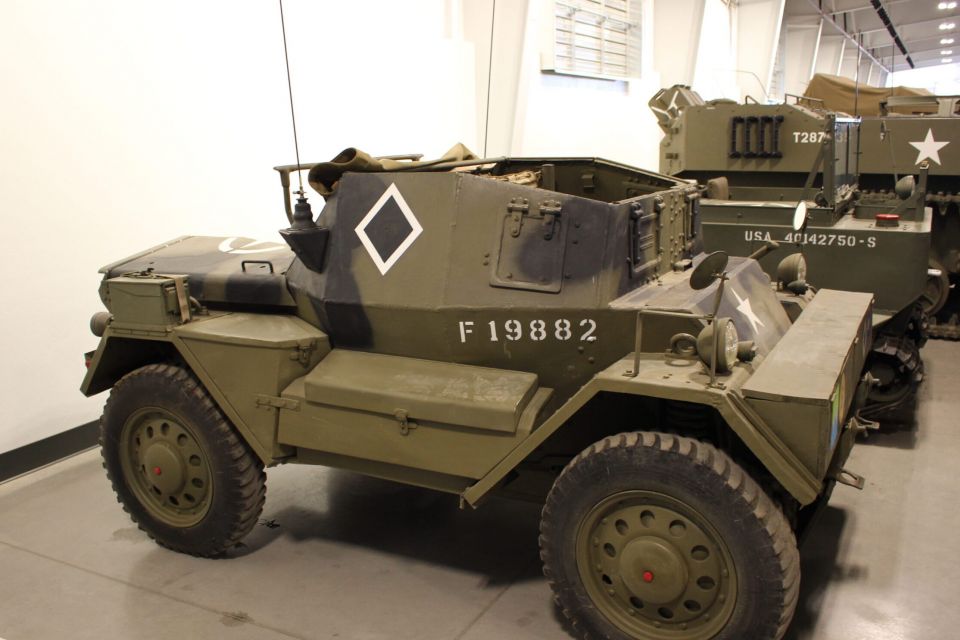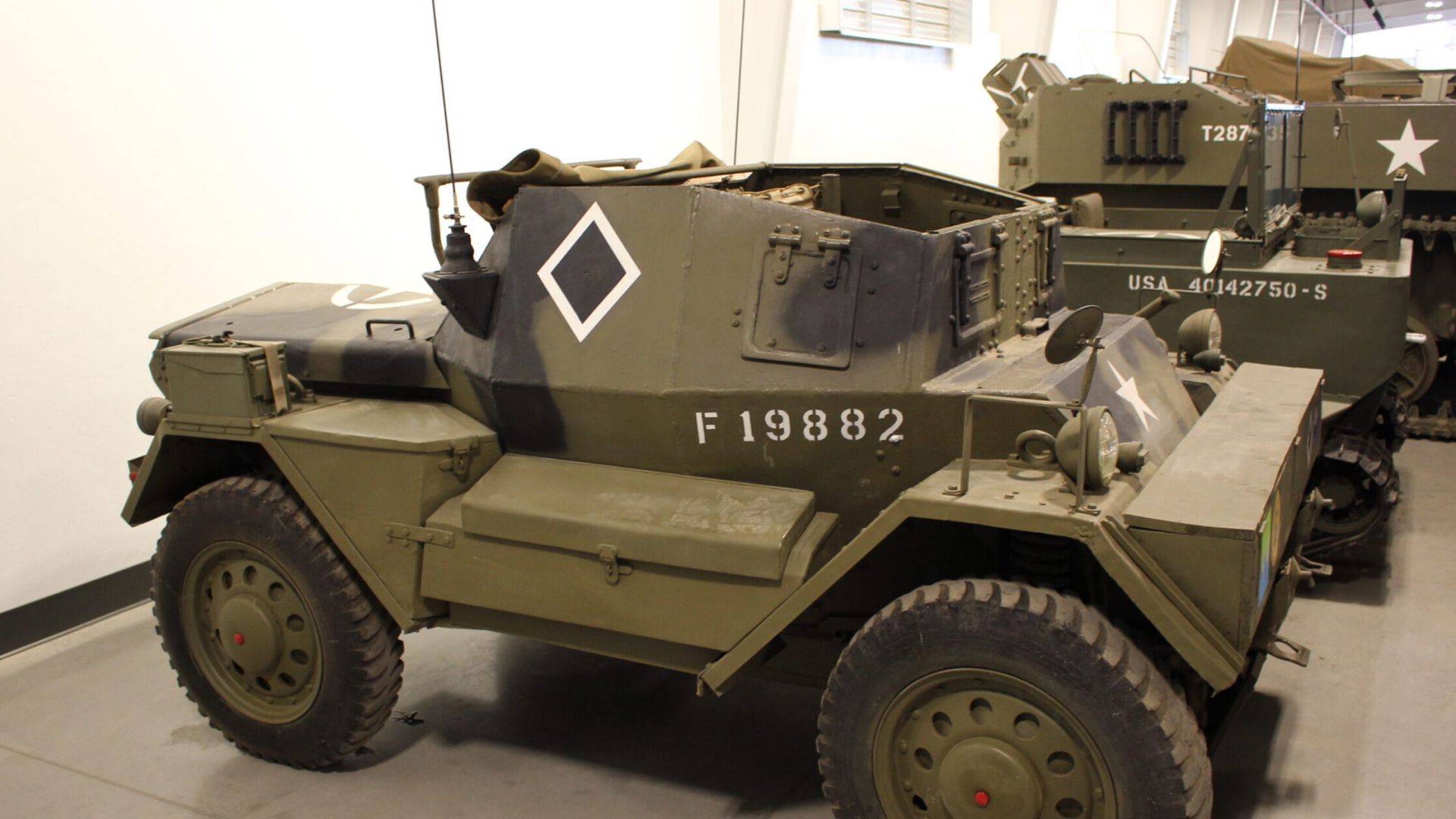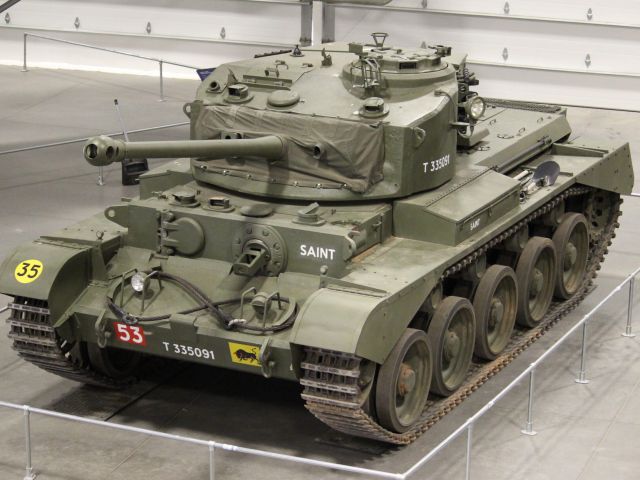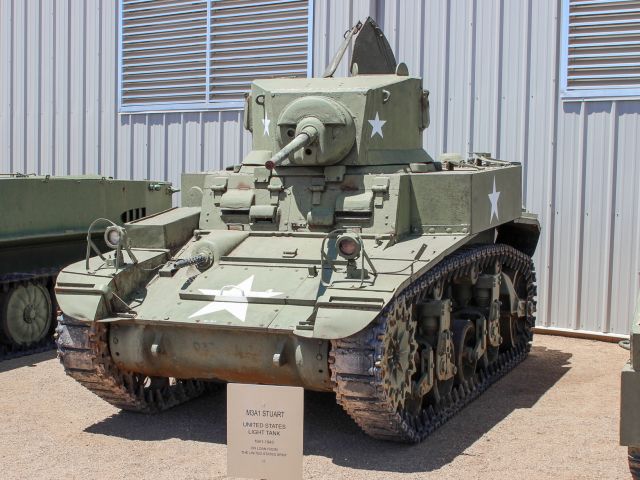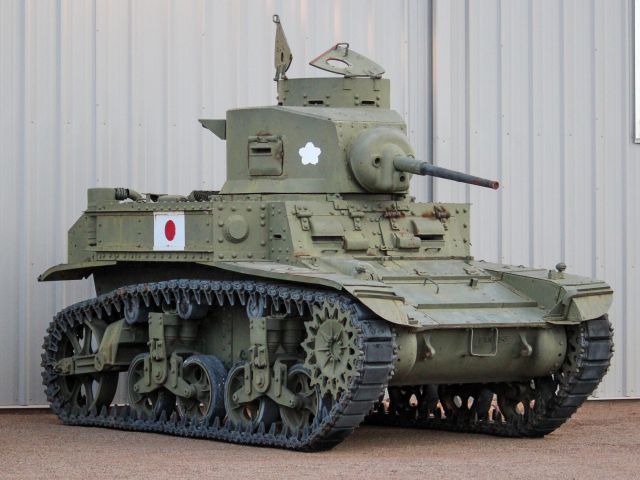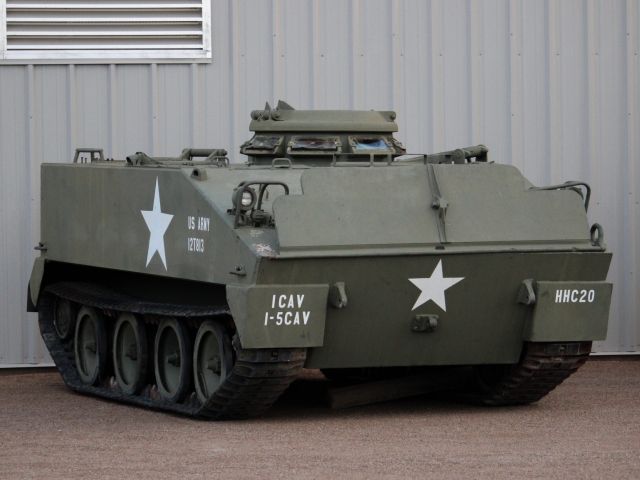Technical Specifications
-
Enter Service:1940
-
Crew:2
-
Weight:2.8 long tons
-
Dimensions:Length: 10 ft 5 in, Width: 5 ft 7.5 in, Height: 4 ft 11 in
-
Armament:.303 in Bren light machine gun; or .55 in Boys anti-tank rifle
-
Armor:30mm
-
Powerplant:2.5 liter 6-cylinder Daimler petrol, 55 hp
-
Performance:Speed: 55 mph, Range: 200 mi
Description
The Daimler Scout Car, known in service as the Daimler Dingo (named after the Australian wild dog) was a British light, fast four-wheel drive reconnaissance vehicle. It was also used as a liaison vehicle during the Second World War. In 1938, the British War office issued specifications for a scouting vehicle to three British motor builders. The Birmingham Small Arms Company (BSA) was approved for manufacturing and passed the production rights to its subsidiary Daimler.
The first order, over 170 vehicles, was produced by Daimler in May 1939. By years’ end the official name Daimler Scout Car was selected for the vehicle. The Daimler Dingo has been recognized as one of the best armored fighting vehicles built in Britain. Designed with the H-drive transmission and pre-sector gearbox, the Dingo could be driven forward or reversed at five speeds. The H-drive also contributed to the Dingo’s low silhouette, agility, quiet engine and running gears.
The Daimler Dingo was first used by the British Expeditionary Forces in the Battle of France in May 1940. It was primarily deployed with reconnaissance units and remained in service with British scouting units until 1952. Production of the Daimler Scout Car ended in 1945 with over 6,600 being manufactured. Minor upgrades to the Dingo resulted in five variants being built. The U.S. military purchase nearly 40 Daimler Scout Cars for convoy support use in the Vietnam War.
From the Count Ferdinand von Galen Collection, donated by his family in memoriam.
